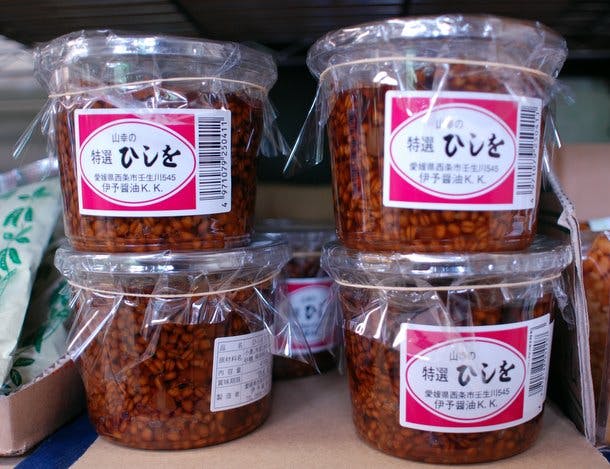
farmers markets
Explore the stunning Shikoku Island in Japan, from its pilgrimage trail to the breathtaking coastline and towering mountains. Discover local markets offering a wide variety of fresh ingredients, homemade miso, pickles, and regional specialties reflecting Japan's food traditions. Learn about the Michi-no-Eki roadside shops and their accessibility to local communities across rural Japan.
After completing our four day trek along Shikoku's pilgrimage trail (see posts below), my girlfriend and I gave our aching feet a rest and rented a car to explore the island. Shikoku was a revelation: A rugged, breathtaking region with dramatic rocky coastline and towering mountains in the interior. I fell in love with this place, my first time there. We drove along the Pacific from Tokushima City to Kochi City over two days, then headed inland to the remote Iya Valley, where we relaxed at the fantastic Kazurabashi Onsen. Along the way we discovered (or at least I discovered, my girlfriend knew all about them) Japan's amazing network of local markets.
Named alternatively michi-no-eki (station by the road), kawa-no-eki (station by the river) or umi-no-eki (station by the ocean), you can identify these shops by a road sign featuring a line diagram of two conifers standing next to a lean-to sheltering a stick figure, or the stylized letters "JA," for the Japanese Agricultural Ministry. (Click here and you'll understand what I mean). When you see these signs, stop the car, park, and step inside the market. That's what we did, every time.
What we discovered were shops that reflected local ingredients and food traditions, with rows of home grown vegetables, fresh rice, grains, tea, regional varieties of citrus, varieties of seaweed, rustic homemade miso, dozens of pickles, even dried figs for sale. Oceanside markets featured ocean products, as you'd expect, while markets deep in the mountains offered a dazzling number of naturally preserved foods, and soba instead of rice. Every product had the name and sometimes phone number of the person who produced it. In the village of Hiwasa, I came across a stack of beautiful cypress cutting boards. They didn't have the exact size I needed, so the clerk called the carpenter and he cut one bespoke!
The market in the tiny fishing port of Tano, along the Pacific Ocean, featured fresh seafood pulled in by the local boats. And not only the raw ingredients. The shop offered oshizushi (pressed sushi, where sushi is formed in a wooden or plastic mold, more common in the Western part of Japan -- see this link and this one) prepared with grilled swordfish spiked with yuzu citrus juice and sesame seeds, pressed on seasoned rice and topped with sliced green onion. Needless to say, sublime. (Attention all sushi chefs: Offer this in your restaurants!)
What struck me about these markets, besides the amazing food, was how accessible they were to the community. Everywhere we stopped, we watched shoppers from the towns and villages fill up their carts -- true local agriculture.
Make sure you check out these markets the next time you're in rural Japan -- they can be found all across the country, not just Shikoku.
